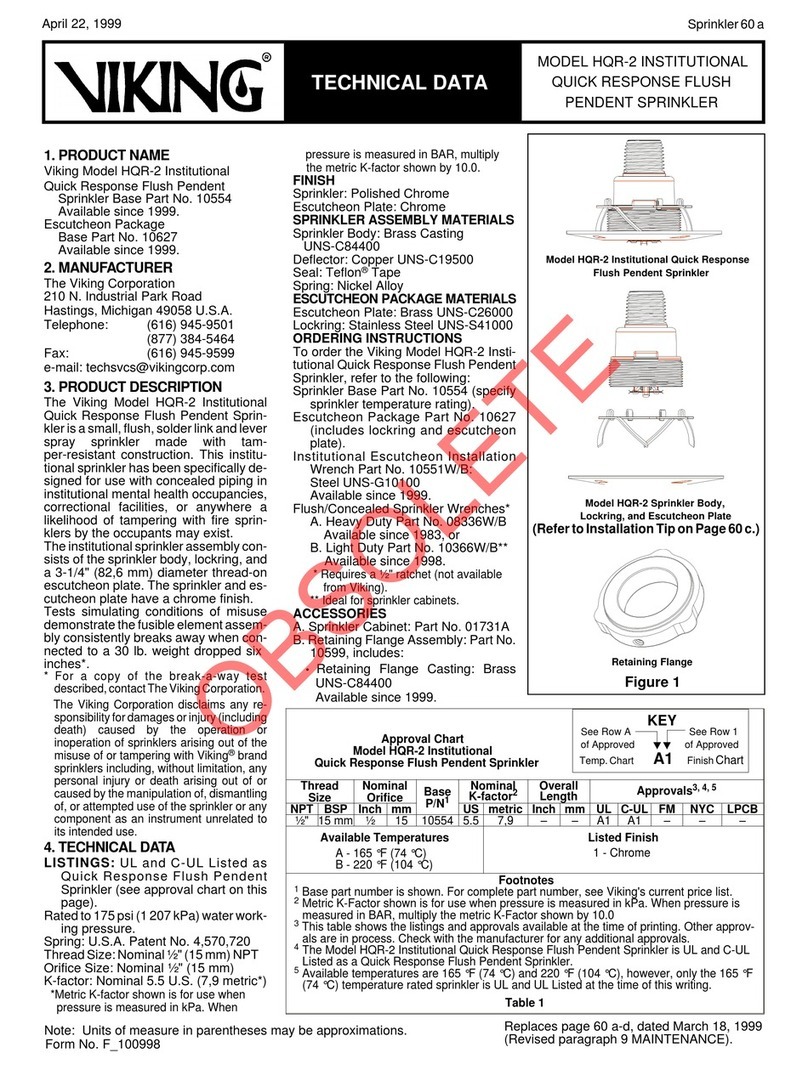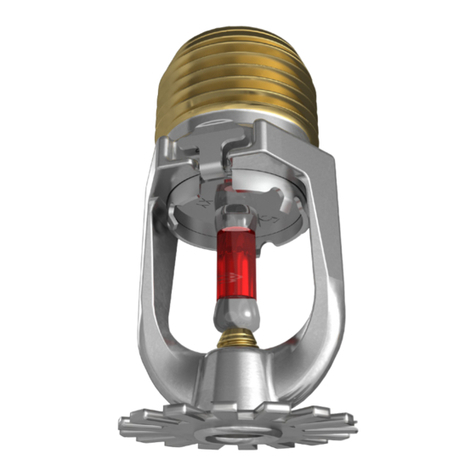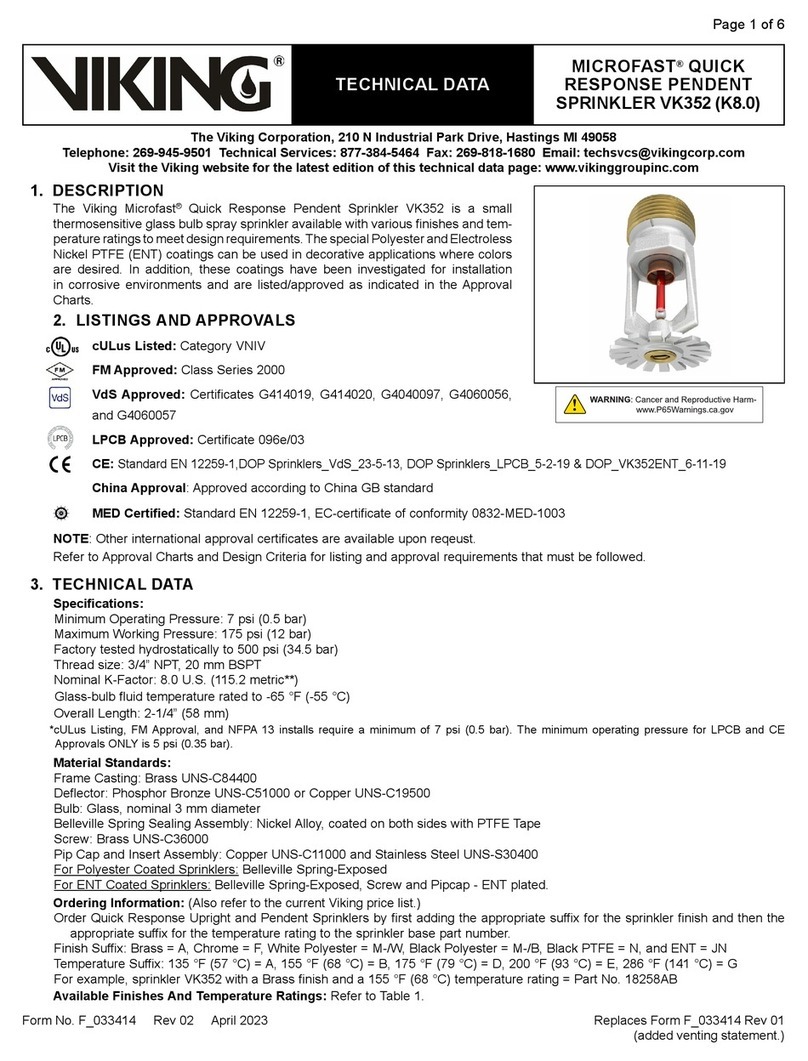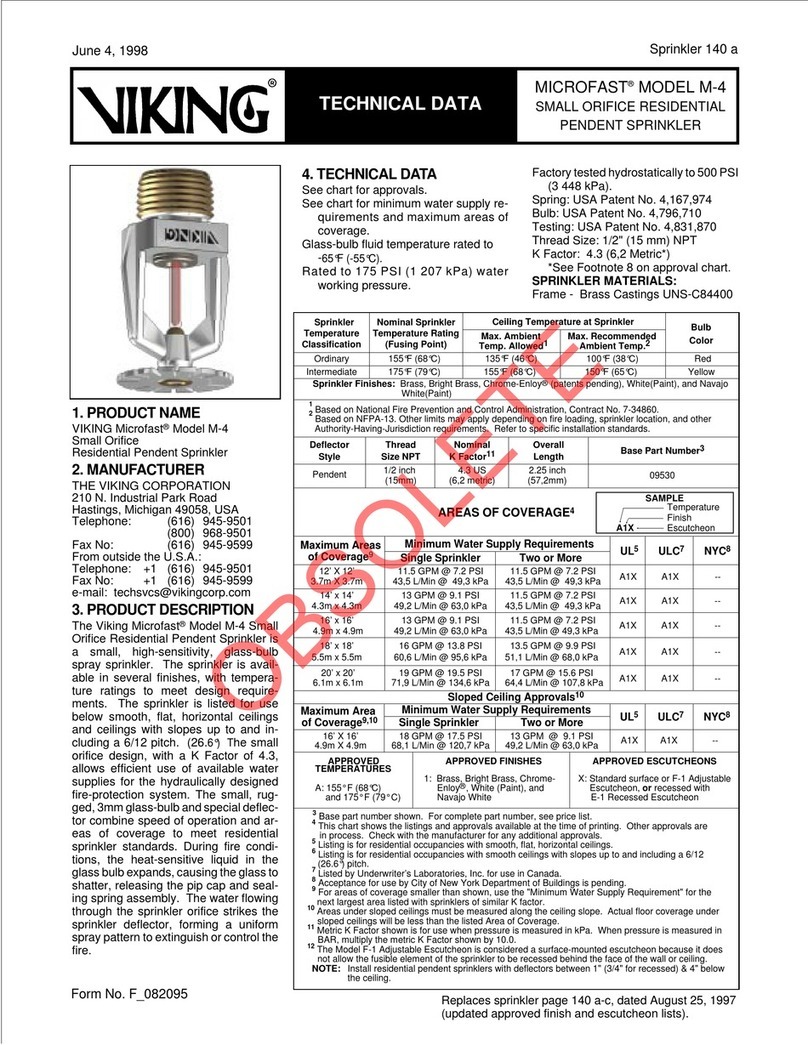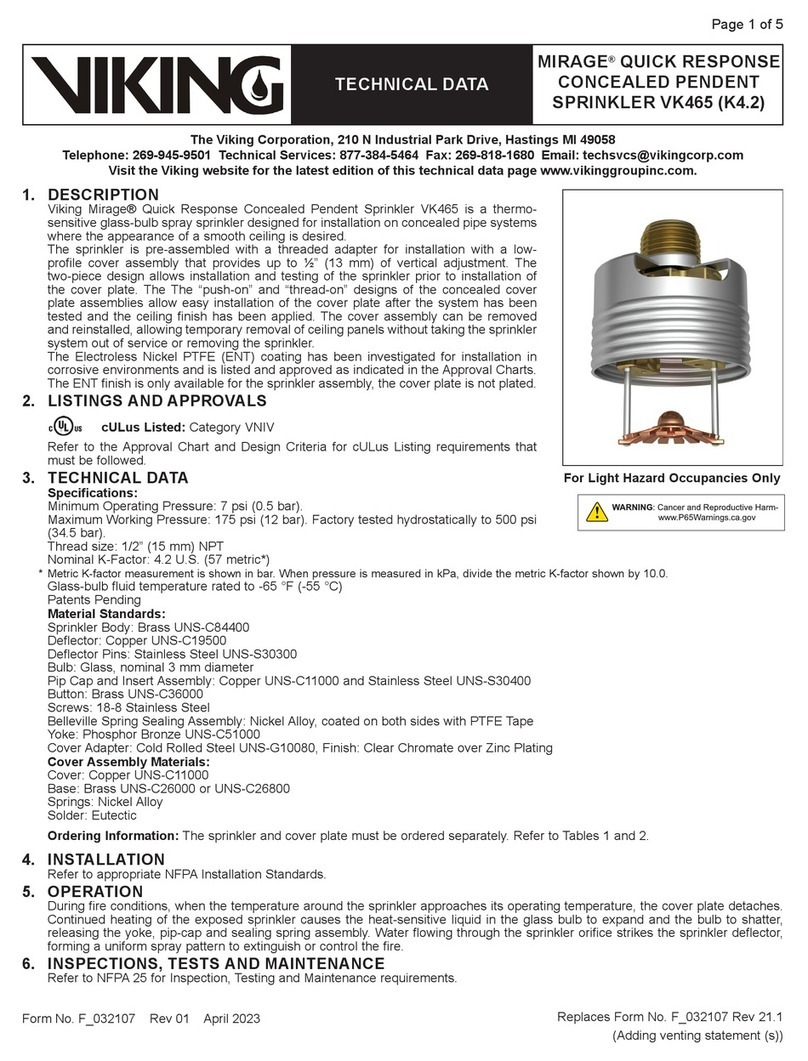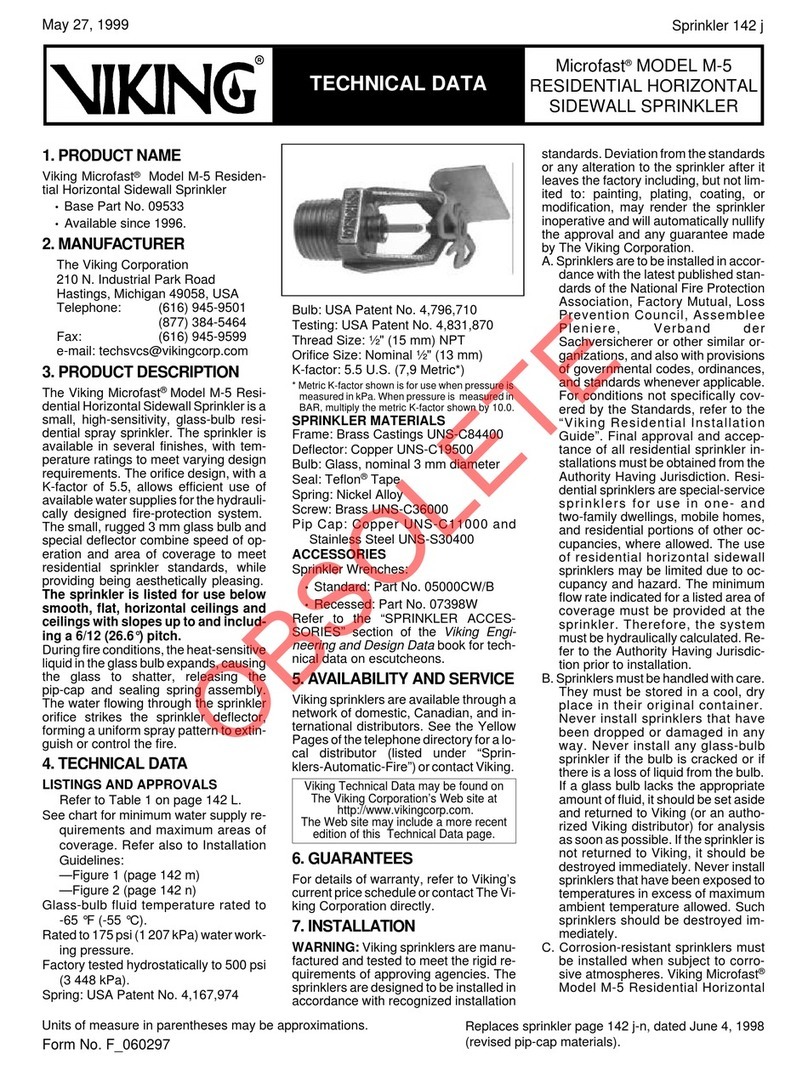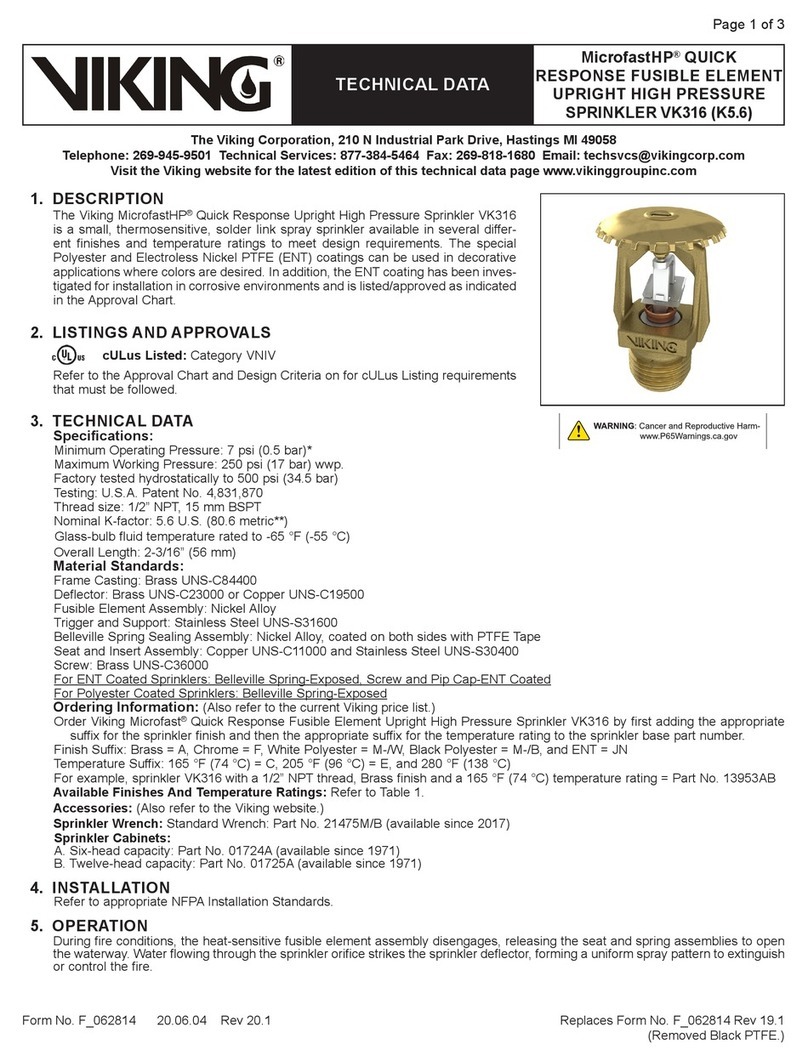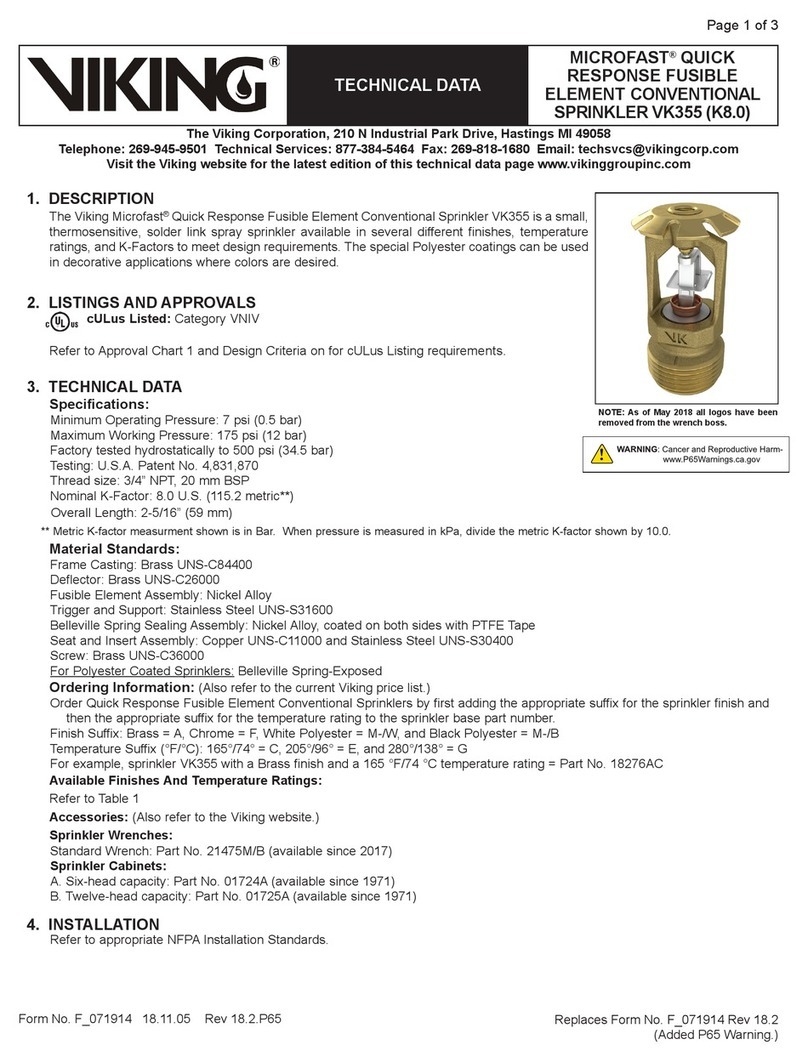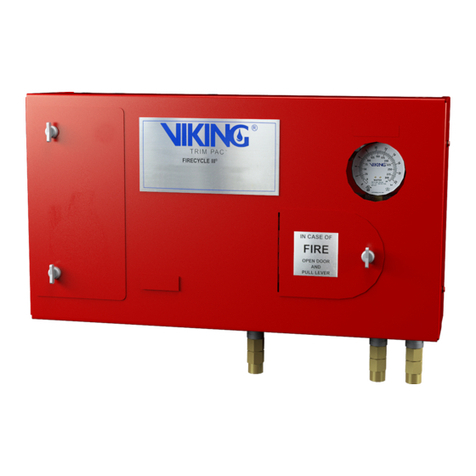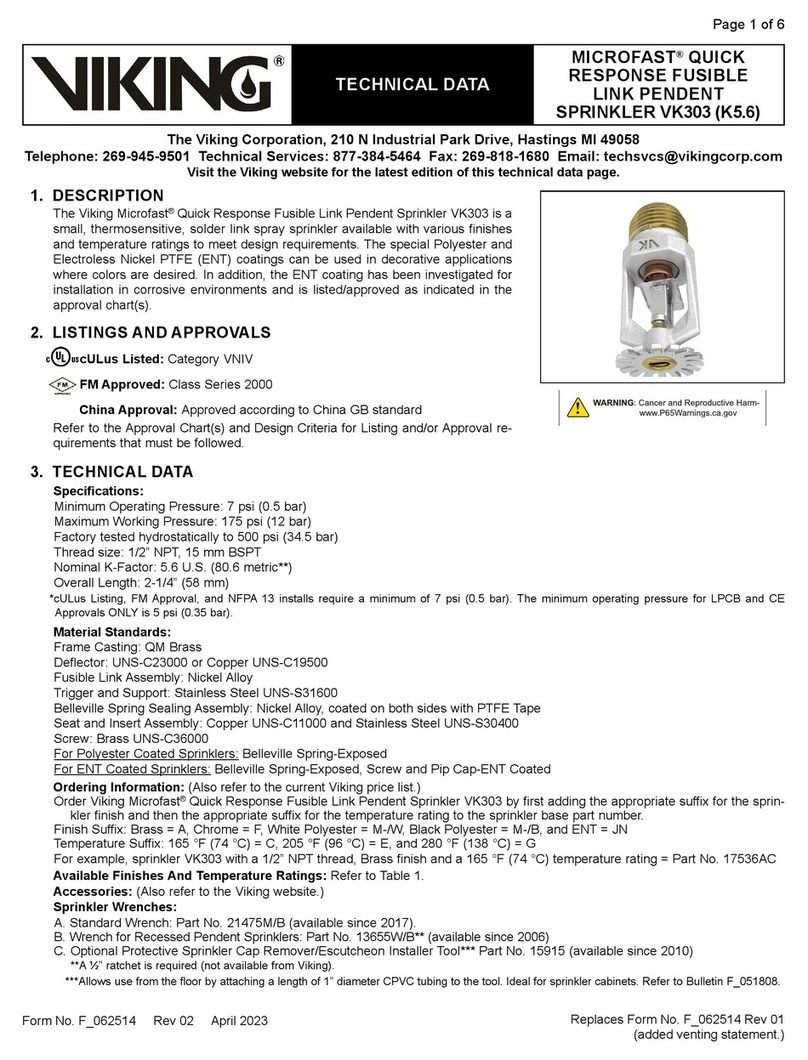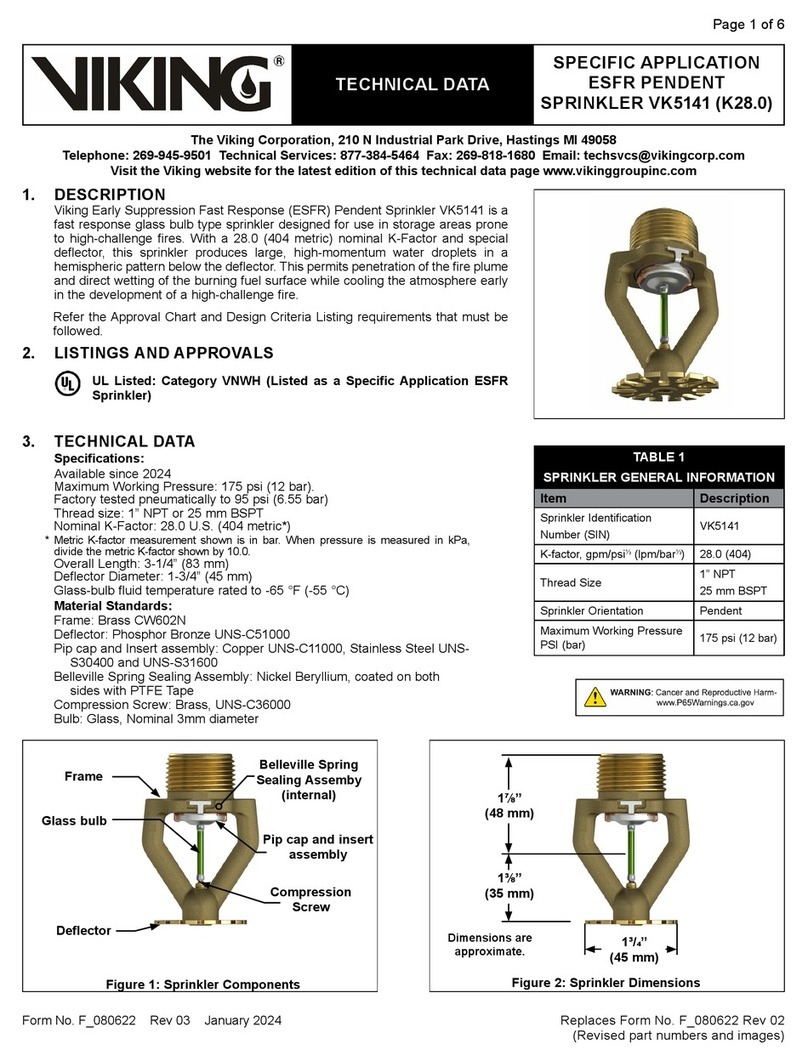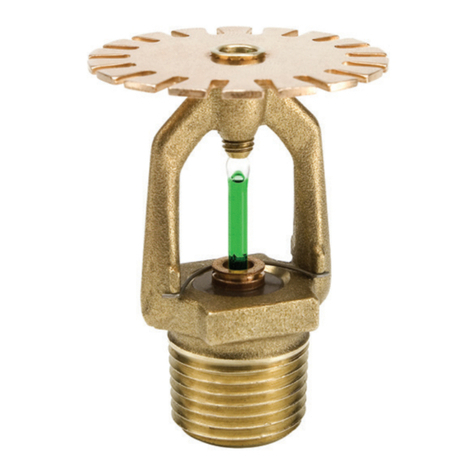
the maximum ambient temperature
allowed. Never install any glass bulb
sprinkler if the bulb is cracked or if
there is a loss of liquid from the bulb.
(These sprinklers should be de-
stroyed immediately).
C. Corrosion resistant sprinklers must
beinstalledwhensubjecttocorrosive
atmospheres. When installing corro-
sion resistant sprinklers, take care
nottodamagethecorrosionresistant
coating. Use only the special wrench
designed for installing coated Viking
sprinklers (any other wrench may
damage the unit).
D. The sprinkler must be installed after
the piping is in place to prevent me-
chanical damage. Before installing,
make sure the appropriate model,
style, orifice size and temperature
rating are used.
1. Install escutcheon, (if used) which
is designed to thread on to the
external threads of the sprinkler.
Refer to "Sprinkler Accessories"
for approved escutcheons and
other accessories.
2. Apply a small amount of pipe joint
compound or tape to the external
threads of the sprinkler only, tak-
ing care not to allow a build up of
compound in the sprinkler inlet.
3. Install the sprinkler on the piping
using the special sprinkler wrench
only, taking care not to over-
tighten or damage the sprinkler
operating parts. DO NOT use the
deflector to start or thread the
sprinkler into a fitting.
E. After installation, the entire sprinkler
systemmustbetestedinaccordance
with the recognized installation
standards. The test is applied after
the sprinkler installation to insure no
damagehasoccurredtothesprinkler
during shipping and installation, and
to make sure the sprinkler has been
properly tightened. If a thread leak
should occur, normally the sprinkler
must be removed, new pipe joint
compound or tape applied and rein-
stalled. This is due to the fact that
when the joint seal is damaged, the
sealing compound or tape is washed
out of the joint. Air testing the sprin-
kler piping prior to testing with water
may be considered in areas where
leakage during testing must be pre-
vented. Refer to the Installation
Guides, andthe Authority HavingJu-
risdiction.
F. Sprinklers must be protected from
mechanical damage. Wet pipe sys-
temsmustbeprovidedwithadequate
heat. When installing Extra Large
Orifice Sprinklers on dry systems,
refer to the Installation Guides, and
the Authority Having Jurisdiction.
8. MAINTENANCE
NOTICE: The owner is responsible for
maintaining the fire protection system
and devices in proper operating condi-
tion. For minimum maintenance and in-
spection requirements, refer to the Na-
tional Fire Protection Association Pam-
phlet that describes care and mainte-
nance of sprinkler systems. In addition,
the Authority Having Jurisdiction may
have additional maintenance, testing
andinspectionrequirementswhichmust
be followed.
A. The Sprinklers must be inspected on
a regular basis for corrosion, me-
chanical damage, obstructions,
paint, etc. The frequency of the in-
spections may vary due to corrosive
atmospheres,water suppliesandac-
tivity around the device.
B. Sprinklers that have been painted or
mechanically damaged must be re-
placed immediately. Sprinklers
showing signs of corrosion shall be
tested and/or replaced immediately
as required. Standard response
Sprinklers that are 50 years old shall
be tested and/or replaced as re-
quired. Sprinklers that have oper-
ated cannot be reassembled or re-
used, but must be replaced. When
replacing sprinklers, use only new
sprinklers.
C. The sprinkler discharge pattern is
critical for proper fire protection,
therefore, nothing should be hung
from, attached to, or otherwise ob-
struct the discharge pattern. All ob-
structions must be immediately re-
moved or, if necessary, additional
sprinklers installed.
D. When replacing existing sprinklers,
the system must be removed from
service. Refertotheappropriatesys-
tem description and/or valve instruc-
tions. Prior to removing the system
from service, notify all Authorities
Having Jurisdiction. Consideration
should be given to employment of a
fire patrol in the affected area.
1. Remove the system from service,
draining all water and relieving all
pressure on the piping.
2.Usingthespecialsprinklerwrench,
remove the old sprinkler and in-
stall the new unit. Care must be
taken to replace the sprinkler with
the proper model, style, orifice
size and temperature rating. A
fully stocked spare sprinkler cabi-
net should be provided for this
purpose.
3. Place the system back in service
and secure all valves. Check and
repair all leaks.
E. Sprinkler systems that have been
subjected to a fire must be returned
to service as soon as possible. The
entire system must be inspected for
damage and repaired or replaced as
necessary. Sprinklers that have
been exposed to corrosive products
of combustion or high ambient tem-
peratures, but have not operated,
should be replaced. Refer to the
AuthorityHavingJurisdictionformini-
mum replacement requirements.
Form No. 010692
Replaces Sprinkler page 13 e, f, & g dated April 1, 1994
(Added FM Approved upright ELO.)
TECHNICAL DATA MODEL M
EXTRA LARGE ORIFICE
SPRINKLER
Sprinkler 13 h February 15, 1996
R
Figure B

